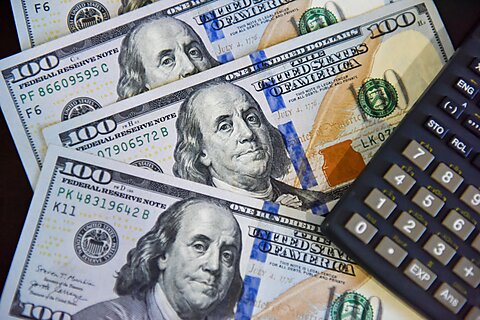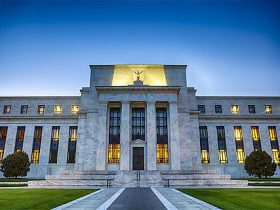Jai Kedia and Norbert Michel
We and our Cato colleagues have written extensively about the flawed logic behind many of the current administration’s economic policies, especially regarding trade. Those flaws include, for instance, the notion that the trade deficit must be “balanced,” that manufacturing has been decimated, that increased trade with China “hollowed out” the middle class, that the Fed can make interest rates whatever it wants them to be, and that encouraging a “weaker” dollar is good for Americans.
In this post, we further critique the administration’s theories on international trade and finance. Specifically, we critique the theories espoused by one of the administration’s chief economic strategists, Stephen Miran, who the president has decided to appoint to the Fed Board of Governors. Miran is the current chair of the Council of Economic Advisors (CEA), the governmental group originally credited with the widely debunked “formula” behind the administration’s so-called reciprocal tariff rates. Miran has also expressed his desire to shift the focus of monetary policy away from targeting inflation. And perhaps most dangerous of all is his fixation with the dollar’s “overvaluation” due to its demand in forex markets.
Given the far-reaching implications of implementing these kinds of policies, it is worth critically reviewing the reasoning behind them.
The most comprehensive explanation of the theory behind these policies appears to be Miran’s Hudson Bay Capital Report, released in 2024. Most of the schemes in this report are, as expected, designed to achieve some sort of balanced trade and/or currency devaluation. According to Miran, these policies are designed (at least partly) to solve what is known as the Triffin dilemma, where a national currency loses its reserve status and ushers in “a wave of global instability.” This detail is nontrivial because Triffin’s theories are primarily a critique of the Bretton Woods gold exchange standard, where the US had pledged to convert dollars into gold. Since this standard was abandoned in 1971, it is hard to see how Miran’s reading of the Triffin dilemma applies to modern international finance.
Notwithstanding the absence of any kind of gold convertibility requirement, the wide-ranging policies outlined in the Hudson Bay Report are flawed because they rest upon the same flawed logic behind the administration’s tariff policies. They are also flawed because they hinge on the government’s ability to fine-tune the economy to a degree that experience suggests is wildly optimistic. Nonetheless, Miran argues that there is “a path by which the Trump administration can reconfigure the global trading and financial systems to America’s benefit, but it is narrow and will require careful planning, precise execution, and attention to steps to minimize adverse consequences.”
Even a superficial reading of Miran’s plan suggests that his statement is a gross understatement. In truth, the plan seems more like a schematic for an economic perpetual motion machine, filled with contingencies that Miran himself doubts. There is too much in the report for us to rehash here, so we provide only the steps required to devalue the US dollar (USD) under Miran’s “multilateral” approach (dubbed the “Mar-a-Lago Accord”). The list that follows paraphrases most of the steps required to execute this accord.
Implement punitive tariffs on key trading partners. This move is to be used later as a bargaining chip while convincing countries to help with USD currency manipulation. Implementing tariffs correctly will require several steps too, but for simplicity’s sake we’ve left those out. (For what it’s worth, it is difficult to see how tariffs have, so far, been implemented “correctly” as required in Miran’s plan.)
Tariffs should be accompanied by currency appreciation. This appreciation is supposed to mitigate the inflationary effects of tariffs on US consumers. That is, the cost of tariffs being passed on to US consumers will be balanced by equivalent increases in the value of dollars held by US consumers. (The plan seems to have broken down here already because the US has suffered currency devaluation since the implementation of tariffs.)
Explicitly tie the US security umbrella with the international flow of USD. In other words, countries relying on US military protection must pay for that protection by buying US Treasuries. Also, these government bonds must be of long durations (“century bonds”), not short-term. If a country fails to swap bills for bonds, it will be excluded from trade through tariffs. (Curiously, the plan does not mention China, which is not under the US security zone but holds $800 billion worth of US Treasurys.)
Foreign reserve managers (presumably, foreign central banks) must then start selling USD. The USD should then appreciate, thus helping US exporters and manufacturing.
These foreign reserve managers will suffer financial consequences like higher interest rates. To mitigate those consequences, they should accompany selling USD with their own version of quantitative easing by terming out of their remaining reserve holdings. Since their reserves will then have a longer duration, this process should suppress interest rates.
If the bonds that reserve managers buy are the century bonds from step 3, then the US Treasury can buy back long-duration bonds from private US markets, essentially shifting long-term interest rate risk onto foreign central banks.
The process ultimately shifts interest rate risk from the US to foreign taxpayers. Acknowledging the difficulty of forcing these foreign governments to accept this scheme, the plan requires returning to steps 1 through 3, thus relying on the stick of tariffs or the carrot of international security. Also, foreign central banks could use monetary policy tools to help ease these concerns.
Securing this agreement will be difficult because the point of holding foreign reserves is to use them to counter short-term currency volatility, something that cannot be accomplished if foreign central banks hold long-term bonds. According to Miran’s plan, foreign central banks should mitigate this problem by opening swap lines with the Federal Reserve or the US Treasury’s Exchange Stabilization Fund. They can then lend USD to reserve managers at par against long-term bonds.
After discussing the steps highlighted above, Miran questions whether foreign governments even have the USD to sell in the first place! In his words: “a multilateral approach to dollar adjustment will only work if our trading partners have dollars to sell.” That is because, unlike during the 1980s-era Plaza Accord, an agreement between France, West Germany, Japan, and the United Kingdom to depreciate the USD, most USD are now owned by Middle Eastern or Asian trading partners with whom we have more adversarial relations. Miran also notes that a large share of USD assets is held by institutional and retail private investors who cannot be convinced to sell through accords. They are likely to sell if they are price sensitive, and if they do sell, they could overwhelm the bids from foreign reserve managers and derail the whole plan to devalue the USD. Aside from this multilateral approach, the report also proposes numerous “unilateral” approaches, all of which are likely to end in the decimation of goodwill with our key trading partners.
These far-fetched ploys all require a perfectly calibrated tariff rate coupled with an orchestrated decrease in the dollar’s value relative to other currencies. The finely tuned decrease must be just enough to encourage US exports but not so much as to knock the dollar off its perch as the world’s reserve currency. Miran himself admits that the successful path for such policies is “narrow” and the “[p]otential for unwelcome economic and market volatility is substantial.” It also hinges on the idea that the USD is overvalued, but the plan offers no suggestion for determining what the true equilibrium value of the USD should be.
Miran’s insistence that there is something wrong with the US dollar’s valuation is particularly dangerous. As Miran tells it, the global demand for USD “has placed undue burdens on our firms and workers, making their products and labor uncompetitive on the global stage and forcing a decline of our manufacturing workforce.” This view is highly flawed. The United States is a magnet for foreign investment, and purposely starving the country of those flows would be economically disastrous. The fact that all developed nations have been experiencing the same decreasing shares of manufacturing employment owing to increased productivity only makes this scheme more ludicrous.
The point of this blog post is not to instill panic. In fact, there is a case to be made that Miran is much more dangerous as CEA chair than as a Fed board member, where he will be only one of twelve FOMC members who make rate target decisions. But his appointment inserts a direct political channel from the executive to the central bank, and if multiple new appointments insist on promoting this kind of plan, it risks shattering the central bank’s credibility.
At the very least, members of the Senate should openly question Miran on his proposals for managing the value of the USD, the provision of which is under the direct supervision of the Fed. Moreover, there should be intense scrutiny of any proposals that aim to drastically upend the US monetary system, such as the desire to shift the Fed’s focus away from stabilizing the price level.
We are no fans of central banking, but we are even more averse to populist schemes that could derail our monetary system without careful thought and deliberation. The American system, for all its flaws, has helped millions of people create enormous prosperity during the past several decades. While the system could surely be improved, its success should not be taken for granted.






